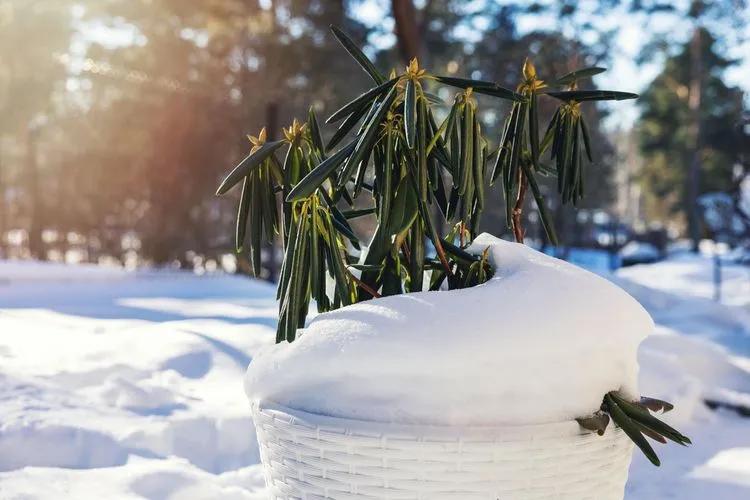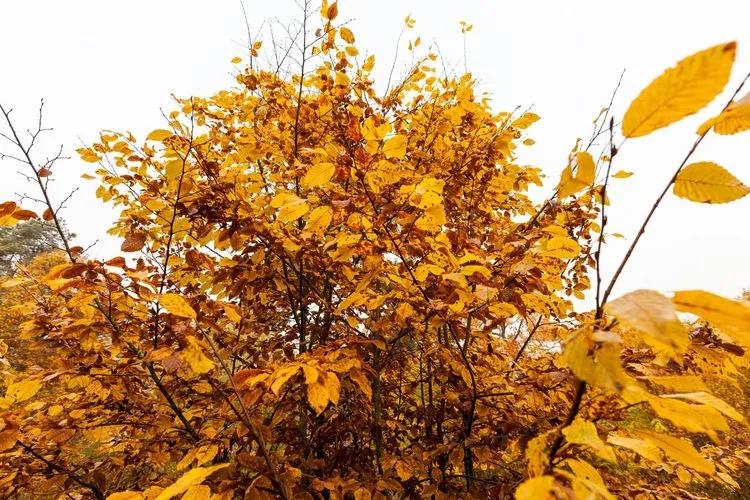Have you ever noticed your plants don’t grow? They look healthy, but no leaves and branches appear. That might upset you if you are looking forward to seeing your green friend progressing. But don’t worry. The plant just might be dormant. What is a dormant plant? Read further to find out!

What Does Dormant Mean?
The term dormancy means the plants have a period of rest. It is a natural part of most plants’ life cycle. When a flower is in a dormant state, it consumes less water and nutrients. Therefore, you shouldn’t fertilize dormants.
Dormancy meaning is tremendous for some plants as they can even die without a hibernation period. Others can survive, but their growth will be inhibited, and blooming might be impossible.
Do Plants Grow When They Are Dormant?
Usually, dormant plants do not grow at all or exceptionally slowly. Deciduous trees shed their leaves during hibernation, making it impossible to photosynthesize, thus, grow or mature in any way. Tropical plants stop vigorous growth when they are dormant. The metabolism slows down to a minimum, which means they have very little change.
The only thing that may occur in dormant plants is preparing for the next flush of growth on a cellular level. Often, you can’t recognize it externally. The only way to determine if the plant is inactive is to make long-term observations to see if it develops and learn more about your plant species.

What Triggers Dormancy in a Plant?
Although plants don’t have senses like sight or touch, it’s easy for them to feel changes in the environment because of the biochemical processes in their cells. Once they feel the natural conditions are not benign anymore, they go dormant to store the energy and nutrients for the next flush of growth.
These conditions strongly depend on the species, niche, and climate the plant grows in. The main environmental factors are:
- Lighting level
- Daylight hours
- Temperature (heat or frost)
- Amount of precipitation (rainfall or drought)
- Season
- Humidity level
What Is an Example of a Plant Becoming Dormant?
All plants have dormancy in some form except for annuals since they live for one season. It might be difficult to tell what plants must undergo this process and what can live in an unchangeable indoor environment almost without apparent dormancy.
The most obvious dormant examples are deciduous trees and shrubs that shed their leaves. Growing in cold winter climates forces them to stop their growth to survive.
But do evergreen trees hibernate? It’s not that easy concerning evergreens and conifers. But they do, either regularly or occasionally. For instance, pines hibernate in cold climates where frost is always present in wintertime, while tropical or succulent plants may have dormancy only during a dry spell.
Succulents tend to have dormancy in scorching or cold conditions, but it’s not so vital. For example, you can keep your jades and echeverias under grow lights at a constant temperature with pretty much success. They just won’t bloom because their inner clock is fooled, and they don’t know when to grow flowers. Nonetheless, lithops need some sleep to develop a bud which is going to be a new leaf. If you keep them always warm and watered, you might lose your plants.
Another example of inevitable dormancy is bulbous plants like hyacinth, lily of the valley, tulip, and crocus. Some of them have summer dormancy to overcome drought, while others are dormant from fall to winter, depending on the climate and species.
On the other hand, caladium loses all the leaves in winter in dry and dark conditions. If you don’t know much about this species, you might think it’s dead. With bright sunlight and humid air, it can grow in a complete and harmless absence of dormancy.

What Are the Three Types of Plant Growth?
Many plants require dormancy as a vital part of their growing cycle. Lithops, spruce, and hyacinth can’t grow without hibernation since it triggers their cells to develop. There are three types of plant growth, and dormancy helps the biological clock define the borders between them.
Meristematic
Meristems are tissues that grow new plant organs. They subdivide into primary (apical) growth, which is growing in height. This type of growth can be called “tip growth.” And secondary (lateral) growth means growing wider. Primal meristematic growth stops during hibernation, while secondary is often impossible without dormancy.
Elongation
Elongation is the result of meristematic growth. If the latter is the formation of new plant tissue, elongation is the actual growth of the cells. The elongation of young leaves and branches illustrates this type of growth pretty clearly.
Maturation
Maturation growth biology definition is a process of cell division in lateral meristem that leads to thickening and maturing. Roots and branches rouse thin and flexible, widening and acquiring bark with time. Maturation is also highly dependent on the seasonal cycles, and this type of growth is not even. That is why trees have year rings, which are signs of annual maturation growth with pauses for dormancy.
What Are the Growth Stages of Plants?

There are 4 stages of plant growth. Every plant starts as a dormant seed that needs a stimulus to sprout. The first one of all plant growth stages is called germination. All seeds need water, and some others need cold temperatures to sprout. Therefore, germination usually starts when mature plants have already begun active growing period.
The active stage of plant growth characterizes vigorous vegetation and meristematic growth. In annual plants, reproduction is the next and final stage, while biannual and perennial plants hibernate during cold winter or a summer dry spell. Then, plants start growing again when the conditions are favorable until they mature enough to reproduce by flowering and fruiting.
What Is the Actively Growing Part of a Plant?
Meristem is a non-specified tissue that can grow leaves, buds, and flowers. This tissue is the actively growing part of any plant. Primary growth occurs only during active growth periods and requires a lot of water, nutrients, and sunlight. Seasonal changes force plants to stop growing due to a lack of lighting and warmth. Thus, plant parents should stop fertilizing and watering plants.
FAQ
How Can I Identify When a Plant Is Entering Dormancy?
You’ll usually notice dormancy creeping in when growth just… stops. New leaves don’t appear, older ones may yellow or drop, and the plant starts drinking far less water than usual. Some species even form tight buds or shed foliage altogether.
Plants are not that simple as they seem. At times they look worrying. But if you take a closer look, you’ll notice it’s not that bad at all. It just needs less water and fertilizing to fall asleep and wake up in spring full of strength for a new growing season. Don’t stop learning new things about plants to keep them always healthy!
